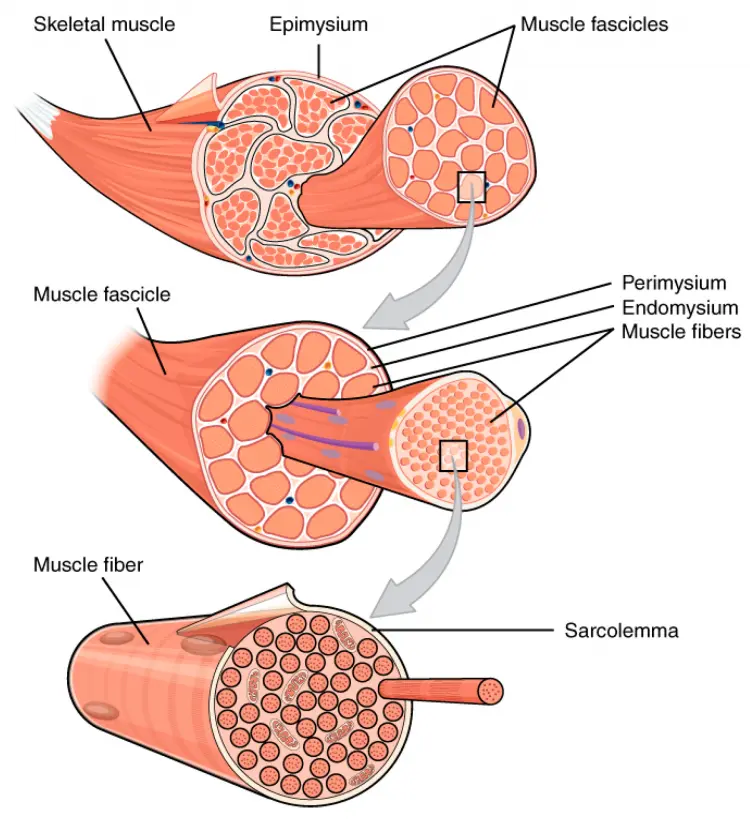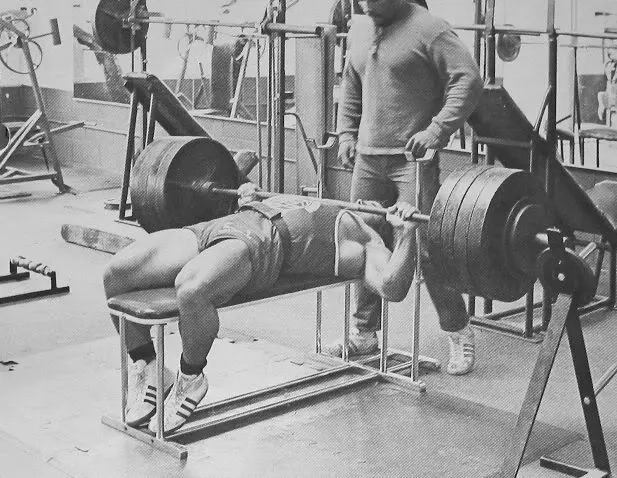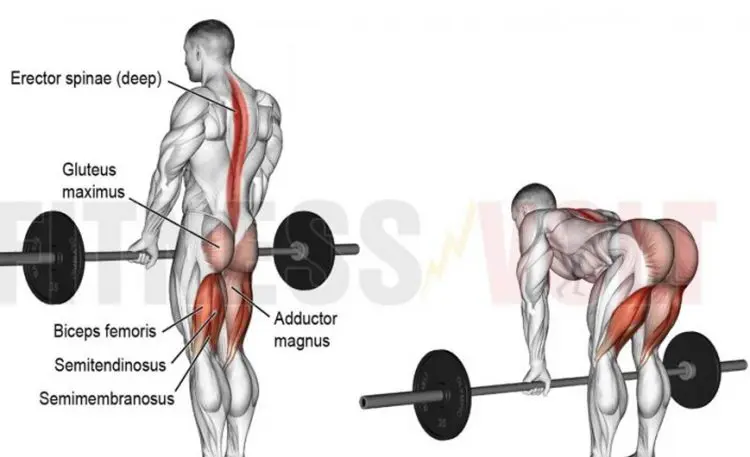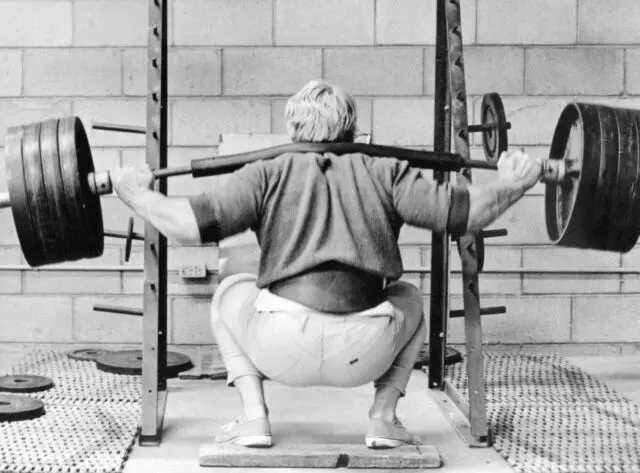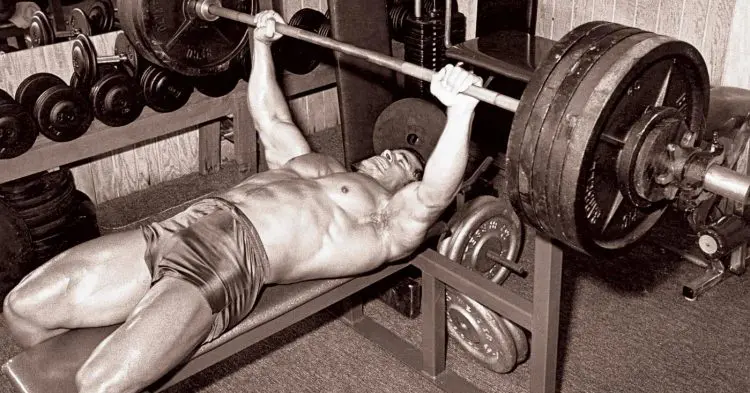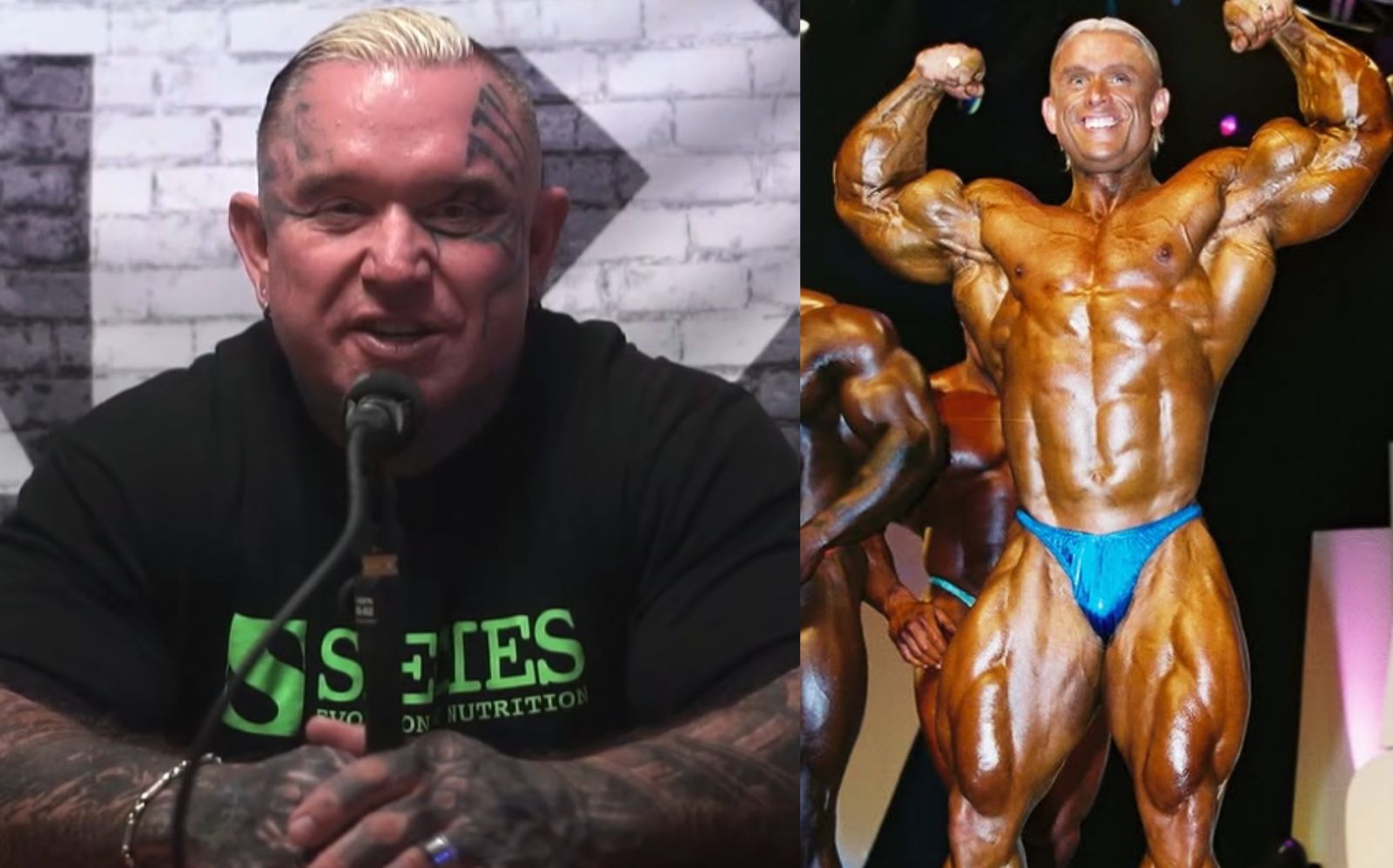Did you know that, before coming world-renowned bodybuilders, the likes of Ronnie Coleman, Franco Columbu and Arnold Schwarzenegger competed as powerlifters and strength athletes?
In fact, the majority of the top bodybuilders in the world right now use training methods that you’d expect to find in powerlifting programs.
For all bodybuilders, there is a lot of value in developing raw strength first before anything else.
Traditional bodybuilding training methods can go on the backburner for now.
This article will highlight five powerlifting training methods that will have a significant impact on improving muscle size.
Hypertrophy Mechanisms
Before considering these five methods, let’s first take a moment to understand what it is that causes muscle growth. Having this knowledge will help you understand why the following methods are so effective.
Level Up Your Fitness: Join our 💪 strong community in Fitness Volt Newsletter. Get daily inspiration, expert-backed workouts, nutrition tips, the latest in strength sports, and the support you need to reach your goals. Subscribe for free!
When it comes to building serious size, there are three key influential factors – strength training, nutrition, and sleep.
If you are a seasoned bodybuilder or lifter, you will already be familiar with strength training.
The purpose of strength training is to apply mechanical tension to the muscle which in turn causes muscle damage and metabolic stress (1). Mechanical tension is the physical stress that is placed on the muscles during lifting. You can increase this tension by lifting heavier weight.
This application of stress causes damage to the muscle fibers while also causing metabolites (waste products) to accumulate in the muscle.
By performing a greater volume of work it is possible to significantly increase the amount of damage and metabolic stress thus enhancing the potential for muscle growth.
However, strength training is only a piece of the hypertrophy puzzle. In order to optimize growth, it must also be accompanied by adequate recovery.
Recovery consists of two main factors – nutrition and sleep. If either of these components is missing, you may find that your progress is suboptimal (2, 3).
Read also: Bodybuilding vs. Powerlifting Training – Which is Right For You?
The 5 Training Methods
This section will highlight the five different methods as well as provide the rationale behind each one.
1) Lift Without Using Equipment
In the sport of powerlifting, there are two types of lifters – equipped and raw.
As the names suggest, the equipped lifters can use an array of kit in competition to support them and facilitate an improved performance with their lifts.
For example, equipped lifters will use compressive squat suits and bench shirts that can help the lifter shift a greater amount of weight (4).
Raw lifters are not permitted to use these training aids in competition. Only a lifting belt and wrist wraps are allowed in raw events.
To put into perspective just how much of an advantage equipped lifters have over raw lifters, let’s look at the world records for the bench press.
The raw world record is 738 lbs while the equipped record is a whopping 1100 lbs – that’s a 362 lbs difference!
So why then, as a bodybuilder, why may it be beneficial to lift raw rather than equipped? Because equipped lifting allows you to lift heavier, surely it is of greater benefit?
Well, not exactly. The issue with equipped lifting is that the suit produces elastic energy that significantly contributes towards the lift.
So, while the muscles do have to put in a great amount of work, the suit provides a lot of support and provides mechanical assistance.
When considering the hypertrophy mechanisms, it is important that a great amount of mechanical tension is applied to the muscles.
By using equipment such as the powerlifting suit, some of this demand is taken away from the muscles. However, by lifting raw, all of the demand is placed on the muscles.
Additionally, if you look at some of the top raw powerlifters, they do not look too dissimilar to a bodybuilder in the off-season. On the other hand, the majority of equipped lifters tend not to have this physique.
2) Maintain Bodyweight
As a bodybuilder, you will have to place yourself in a calorie deficit as a competition approaches. Evidently, at this stage, powerlifting training methods may not be appropriate.
However, you should look to minimize the amount of weight that you need to cut for competition. One of the best ways of doing this is to employ powerlifting-type training well in advance of the competition.
There is a clear correlation between powerlifting training and muscle growth. This is primarily because heavy lifting increases the amount of mechanical tension and muscle damage.
Providing you stay outwith a calorie deficit, you will find that your muscle mass will increase along with your bodyweight.
Therefore, when it comes to making weight for a competition, you will not have to cut as much weight and risk losing size.
Stay big and avoid drastic weight cuts that may hamper the end result!
Powerlifting revolves around three compound lifts – the deadlift, squat, and bench press.
The following three methods will recommend alterations that you should make to each of these exercises in order to maximize muscle growth.
3) Deadlift Technique Considerations
Make no mistake, bodybuilders should deadlift. The deadlift is simply one of the best exercises that you can perform for strength and size.
Level Up Your Fitness: Join our 💪 strong community in Fitness Volt Newsletter. Get daily inspiration, expert-backed workouts, nutrition tips, the latest in strength sports, and the support you need to reach your goals. Subscribe for free!
One of the biggest benefits associated with the deadlift is the fact it works the entire rear side of the body (known as the posterior chain).
This is an area that is often neglected by bodybuilders and consequently, it tends to be underdeveloped.
There are two different types of deadlifts used in powerlifting – the conventional and the sumo.
It may be more beneficial for bodybuilders to use the conventional deadlift rather than the sumo. This is primarily down to the range of motion of both movements.
Many powerlifters opt for the sumo deadlift as the wide stance used in the exercise shortens the range of motion and allows the lifter to pull a greater amount of weight.
However, with the conventional deadlift, the distance that the bar has to travel from the floor to the hips is significantly greater.
Utilizing exercises with a large range of motion is recommended for bodybuilders as this will increase muscle tension and time under tension.
As a bodybuilder, you will likely already be aware that increasing the time that the muscle is under tension may enhance muscle growth (5).
Therefore, because the conventional deadlift has a larger range of motion, the muscles of the posterior chain will be held under tension for a greater period of time thus enhancing muscle building potential.
Read also 9 Weeks to a Bigger Deadlift Program.
4) Squat Technique Considerations
On the topic of range of motion, it’s also important to have a look at your squatting technique.
Typically, equipped powerlifters will use a much wider stance than their raw counterparts. The reason for this being that a wider stance gets the most out of their squat suits and limits range of motion.
While this may seem to be an insignificant detail, the stance you use can change the dynamic of the movement entirely.
As highlighted, an overly wide stance reduces the range of motion. Therefore, using a narrower stance will increase the amount of work performed.
As a result, bodybuilders may benefit most from using a narrower stance as it will place a greater demand on the body.
That said, you want to avoid going too narrow with your stance as this may too limit your squat depth and reduce the amount of weight that you can squat.
To get the most out of your squat, place your feet slightly wider than hip-width and turn your toes out very slightly.
This position should allow you to squat with decent depth while also lifting the greatest amount of weight possible.
Read also enhancing squat performance with the Smolov Squat program.
5) Bench Technique Considerations
The bench press in powerlifting is quite a controversial topic as many lifters significantly arch their back to minimize the distance that the bar has to travel.
In a similar manner, bodybuilders often sacrifice range of motion for weight. They excessively load the bar and then only use a partial range of motion.
For the bodybuilder, neither method is ideal. As highlighted, using a great range of motion is recommended for optimizing muscle growth.
Therefore, when performing the bench press, set-up on the bench with only a small arch in the low back.
Once you are in a solid position on the bench, unrack the bar and look to drop the bar all the way down to the lower chest until contact is made.
Once you reach this point, powerfully drive the bar back up to the starting position.
As with the other two lifts, enhancing the range of motion in this way while using the greatest amount of weight possible will lead to the most optimal improvement in muscle mass.
Read also all you need to know about the Bench Press.
Final Word
While there is no denying that many bodybuilding training techniques have their uses, they are no substitute for heavy lifting.
Considering that the five methods outlined in this article are specific to powerlifting, the focus is primarily on developing strength. However, by doing so, you will also experience a substantial increase in muscle size.
References:
1- Krzysztofik, Michal; Wilk, Michal; Wojdała, Grzegorz; Gołaś, Artur (2019-12). “Maximizing Muscle Hypertrophy: A Systematic Review of Advanced Resistance Training Techniques and Methods”. International Journal of Environmental Research and Public Health. [source]
2- Campbell, Bill I.; Aguilar, Danielle; Conlin, Laurin; Vargas, Andres; Schoenfeld, Brad Jon; Corson, Amey; Gai, Chris; Best, Shiva; Galvan, Elfego; Couvillion, Kaylee (2018-11-01). “Effects of High Versus Low Protein Intake on Body Composition and Maximal Strength in Aspiring Female Physique Athletes Engaging in an 8-Week Resistance Training Program”. International Journal of Sport Nutrition and Exercise Metabolism.[source]
3- Dattilo, M.; Antunes, H. K. M.; Medeiros, A.; Mônico Neto, M.; Souza, H. S.; Tufik, S.; de Mello, M. T. (2011-08). “Sleep and muscle recovery: endocrinological and molecular basis for a new and promising hypothesis”. Medical Hypotheses. [source]
4- Blatnik, Justin A.; Skinner, Jared W.; McBride, Jeffrey M. (2012-12). “Effect of supportive equipment on force, velocity, and power in the squat”. Journal of Strength and Conditioning Research. [source]
5- Burd, Nicholas A; Andrews, Richard J; West, Daniel WD; Little, Jonathan P; Cochran, Andrew JR; Hector, Amy J; Cashaback, Joshua GA; Gibala, Martin J; Potvin, James R; Baker, Steven K; Phillips, Stuart M (2012-01-15). “Muscle time under tension during resistance exercise stimulates differential muscle protein sub-fractional synthetic responses in men”. The Journal of Physiology. [source]

